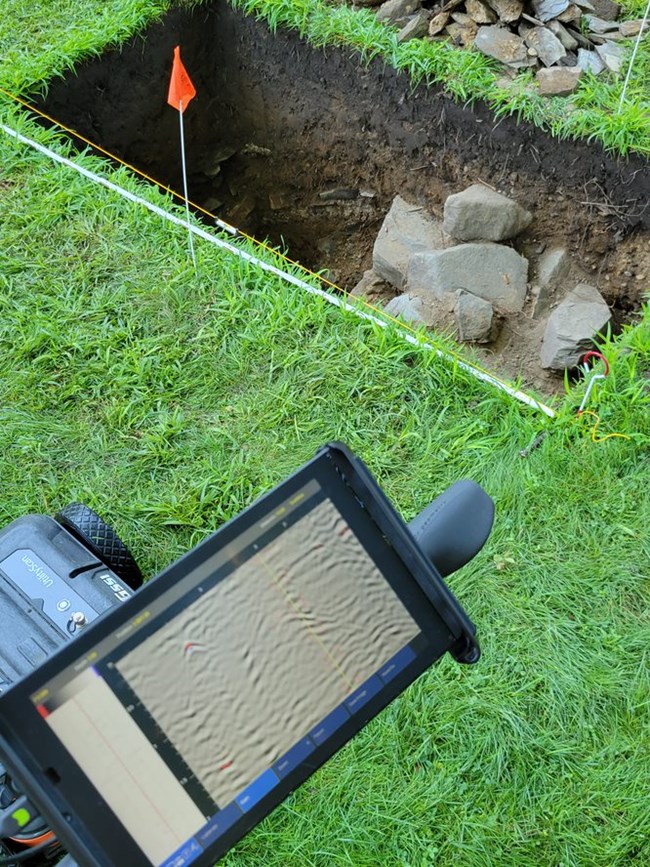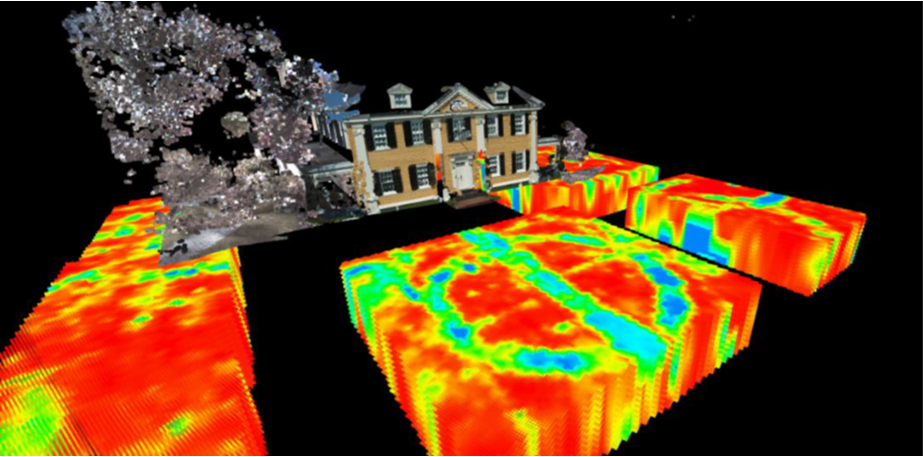Last updated: April 26, 2024
Article
Ground Truthing at Longfellow House-Washington's Headquarters

Longfellow House-Washington’s Headquarters is a National Historic Site located in Cambridge, Massachusetts. George Washington used this property as headquarters during the 1775/6 Siege of Boston. Later, it was home to the poet Henry Wadsworth Longfellow and his family from 1837-1882. This site allows archeologists to understand layered American history through the occupation of these two famous men as well as through the other people who lived on the property.
Before George Washington used the main house (Figure 1) as his headquarters, it belonged to Colonel John Vassall, a sugar plantation owner in the West Indies. Vassal purchased the property in 1747 and soon after it was inherited by his son, John Vassall Jr. following his father’s death. The Vassals’ occupied the house until 1774 when they relocated because of their loyalist affiliation. They left behind seven people that were enslaved at their property. They were Malcom, William, Cuba, Dinah, child James, and two unnamed “small boys”. Most continued to live on the property even during Washington’s time there but were eventually evicted in 1780.
There have been a few previous archaeological projects at the site. The most recent of which was a 2011 geophysical survey (Figure 2). This survey included tools such as Ground Penetrating Radar (GPR), electrical resistivity, and conductivity to scan below the ground and see if there were anomalies that might indicate historical features present. Based on the data collected during this 2011 investigation, there were a few features that archaeologists think might be structural foundations, potential garden beds, landscape features, and colonial-period structures, some of which might even pre-date the occupations of Washington and Longfellow at this National Historic Site .

Waters 2012
Recently, there was an archaeological investigation of the site to locate other potential structures on the property and determine their uses. In June the archaeologists conductied another geophysical survey, with newer technology in order to get higher-resolution images of what is underneath the ground. They returned to the park July 18th- August 5th to “ground-truth” the site. This means that they excavated to look at the underground anomalies found in the geophysical surveys in order to see what the anomaly is. In addition to archaeological research, was public outreach opportunities that go along with this project including our REAL pop-up.
In addition to ground-truthing to understand what archaeological resources are present at the site and where they are located, the project seeks to address the following research questions:
-
Is there a basement structure reflected in the anomalies from the 2011 Geophysics? Was this basement structure built before the 1757 construction of the current house?
-
Are there artifacts and features that reflect the Vassal family’s international connections through the British Atlantic trade system? Do artifacts and features connect to the American Revolution when George and Martha Washington lived there?
-
Can archaeology at this site shed light on the enslaved people who worked, lived, and died there?
-
Is there evidence of changing roles and interactions of the domestic residents in the landscape of the site?
-
What can ground-truthing landscape feature anomalies tell us about the previous utilization of the landscape and when and how it changed?
Now, archeologists will synthesize what they learned from excavations and this information will be used to better interpret the park for its visitors. This information will enhance visitor’s understanding and awareness of the park and the people who lived there over the years.
Anyone interested in learning more about the project can contact archeologists Joel Dukes (e-mail us) with the Northeast Archeological Resources Program of the NPS.
